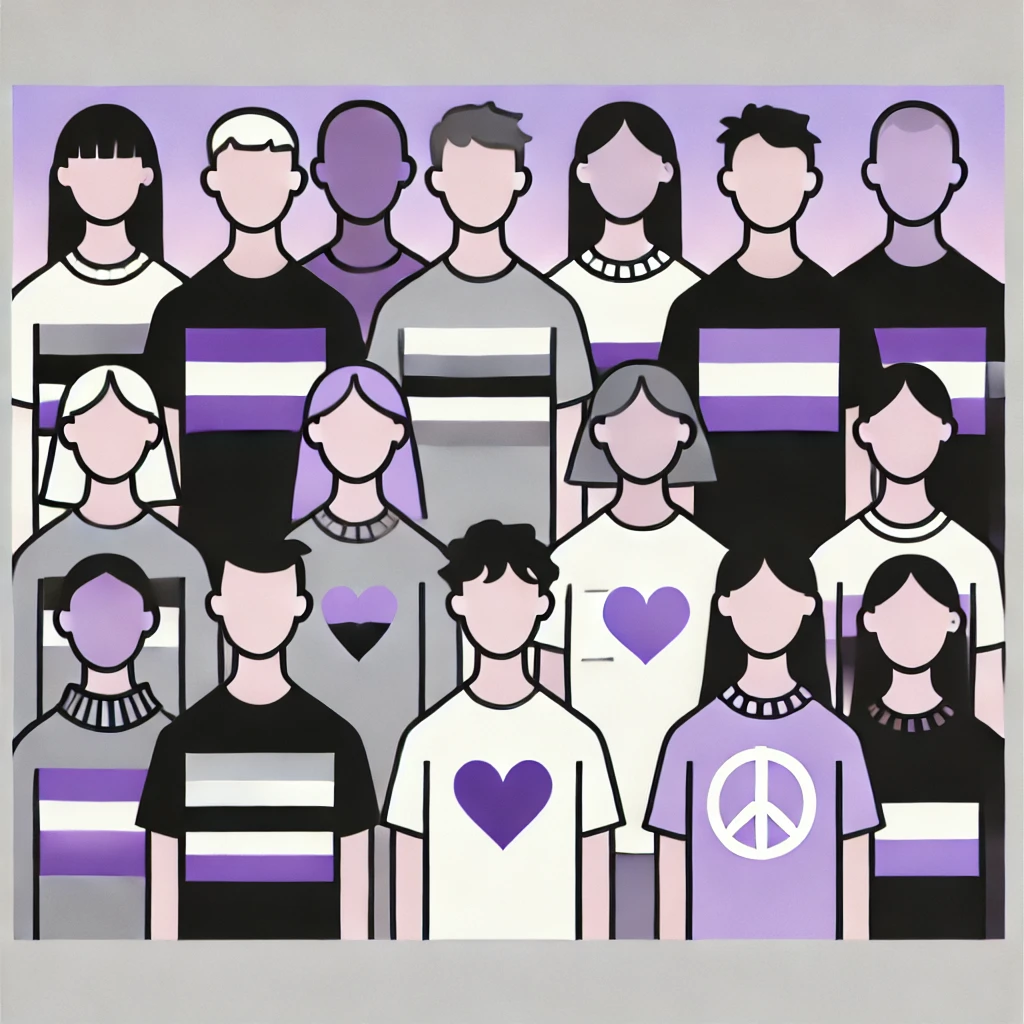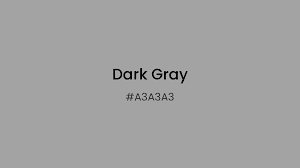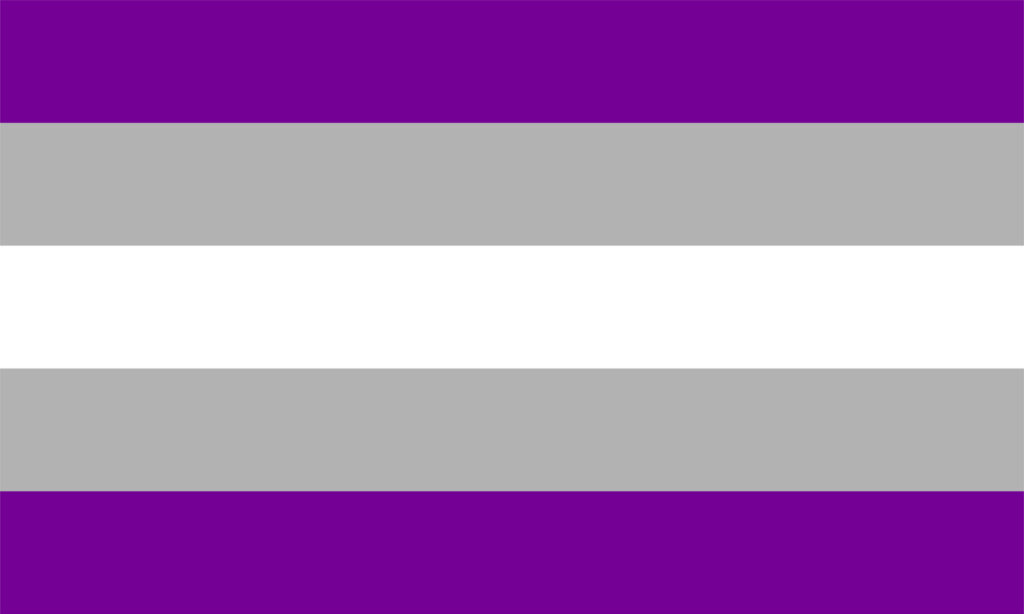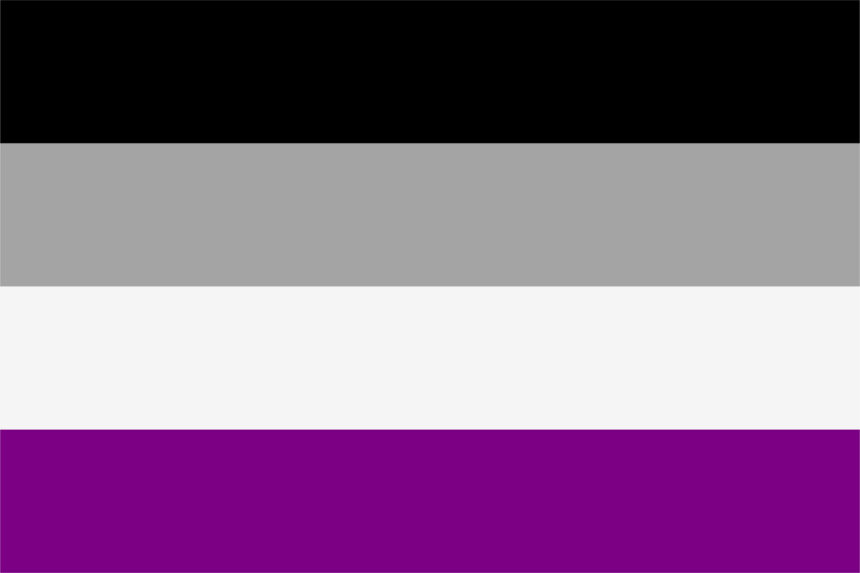What is the meaning of the asexual flag?

Definition of asexual
Asexual is an umbrella term that refers to people who do not feel sexual attraction to others, or less than other people, or only in certain circumstances. Asexual, or “ace,” is the opposite of allosexual. A study by the UCLA School of Law William’s Institute found that asexuals represent about 1.7% of the population. Asexual week is celebrated every year in the last week of October.
Common misunderstandings
Asexual people don’t feel romantic attraction.
Asexuality should not be mixed with being aromantic. Most asexual people do feel romantic attraction, as sexuality and romanticity are different concepts that are not necessarily mutually related. Asexual people can also be in queerplatonic relationships, which are committed queer relationships without intimacy.
Asexual people are basically straight.
Most asexual people have romantic and even sometimes sexual preferences, within binary genders or beyond. In any case, asexuality, a lack of attraction, cannot be a synonym with heterosexuality, which is attraction to the same gender. With that being said, of course, some asexual people are romantically attracted to the same gender, and are therefore heteroromantic.
Asexual people don’t feel sexual attraction / libido.
There exist subcategories of asexuality, such as graysexuality and demisexuality. Demisexual people develop sexual attraction after a long period of emotional attachment, such as a long time of dating. Graysexual people feel sexual attraction on rare occasions and usually at a low intensity, which may drive their choice in a partner (not necessarily someone that they are attracted to) or their sexual behavior (sex is unimportant to them and they generally show affection in other ways). Therefore, there exist asexual people that do feel sexual attraction and libido, but generally under certain conditions.
Asexual people never have sex and are sex-repulsed.
While some asexual people indeed do not have sex and may be sex-repulsed, some do and are not, respectively. This may be due to being demisexual, graysexual, or simply wanting to participate in the bonding activity of sex with their partners without having any particular libido.
Asexual people do not masturbate.
A lot of asexual people do! Libido does exist for a part of asexual people, and they can satisfy this need through masturbation. They may simply not have the desire to act on it with a partner. That is still perfectly valid asexuality.
What the asexual flag represents
The asexual flag is a symbol for those who feel sexuality differently than others, and identify with asexual concepts. At pride parades, the asexual flag has been an increasingly common sight in recent years.
What is the meaning of each color on the asexual flag?
Black

Hex color code: #000000
Black is a lack of colors, so it is used to represent asexuality, the lack of sexual attraction.
Gray

Hex color code: #A3A3A3
Gray represents demisexuality and gray-asexuality. Gray is the perfect color to represent those sub-sexualities in asexuality, for people who are not quite asexual or allosexual. We sometimes say that they are “acespec” (asexual spectrum).
White

Hex color code: #FFFFFF
White represents non-asexual partners and allies. Many asexual people have non-asexual partners, but who are, hopefully, understanding and respectful of their asexuality. Allies make the community bigger and stronger, with ties inside and outside of the asexuality spectrum.
Purple

Hex color code: #800080
Purple represents community. Community has always been a big deal for LGBTQ+ people. It makes them feel seen, protected, and proud. Purple is the representative color of the asexual flag.
When was the asexual flag created?
The asexual flag was created by AVEN (Asexual Visibility and Education Network) user “standup” in 2010. This was the result of a month-long design competition organized by AVEN that involved members of various asexual communities. The context for the flag’s creation was that the online asexual community criticized the AVEN triangle for representing an organization and its website, rather than the community as a whole.
The AVEN triangle has been the symbol of AVEN since 2005. It is an upside-down triangle bordered with purple and with a horizontal gradient going from white to black in the middle. The chosen colors of the asexual flag are the same ones as the AVEN triangle.
Incidentally, the current AVEN triangle is a redesign of a 2002 logo that also featured an upside-down triangle, but with a black border and half of the inside white and the other black, with no gradient and no gray. It was meant to represent the Kinsey scale, an old model to measure heterosexuality, bisexuality, and homosexuality, by placing those categories on top and asexuals being pointed to at the bottom. In 2005, this design was considered too restrictive, as it only represented attraction to one of two genders or none, hence the redesign.
Other acespec flags
Demisexual Flag

Its origin is unknown, but its first appearance online goes back to 2010, shortly after the design of the asexual flag came out, most likely in order to give a flag to those who felt in-between asexuality and allosexuality. Demisexual people only develop sexual attraction after a long time of emotional attachment; they do not spontaneously have sexual attraction to a stranger or someone they just met. This is why the white and gray sections are more prominent, and the black section exists as a triangle to the side. This sexuality is probably more widespread than it is known.
Graysexual Flag

It was created in 2013 by Milith Rusignuolo. Graysexual people feel sexual attraction on rare occasions, the circumstances of which completely depend on the individual. Here, there is no black stripe, as the possibility to feel sexual attraction is always there. However, the white stripe is not as prominent as the gray stripes. Its design is reminiscent of the transgender Pride flag, for no particular reason.
Other LGBTQ Flag
The asexual flag and its variations are only some of all the Pride flags that exist to represent various sexualities and gender identities. Another related flag is the aroace flag – read more about it here!
Asexual is only one type of sexuality, one which can interact with other flags related to romantic attractions, or those related to gender identity. They are not mutually exclusive.
Do any of these flags, or their meanings, apply to you?

